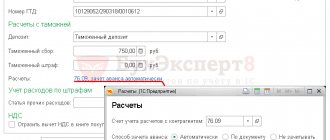What applies to currency transactions
Foreign exchange transactions are regulated by Federal Law No. 173-FZ dated December 10, 2003. According to this law, the following transactions include the following transactions:
Next, we will explain who refers to residents in the context of the law in question, and who refers to non-residents.
Residents can be both individuals and legal entities:
Both legal entities and individuals are also non-residents:
From the above, we can conclude that in 2021, not only organizations, but also ordinary citizens are subject to currency control.
If the parties to a currency transaction are a resident and a non-resident, then it is carried out without restrictions.
In general terms, currency transactions between residents are illegal (Clause 1, Article 9 of Law No. 173-FZ). However, a fairly large number of exceptions are provided, that is, a list of foreign exchange transactions that residents can carry out among themselves. The full list of exceptions is specified in paragraph 1 of Art. 9 of Law 173-FZ. Here are the most common cases of permissible currency transactions:
Details about currency transactions between residents and non-residents are in the article .
Types and codes of currency transactions
Appendix 2 of the Central Bank of the Russian Federation Instruction No. 138-I contains a list of transactions of residents and non-residents. It is used to process transactions and related documents. The currency transaction code in the payment order is indicated based on the data specified in the List.
Here are some codes in general form (the code for the type of operation group is not considered):
| Operation type code | Name of the type of operation | |
| 01 | 010 | Sale by a resident of foreign currency for Russian currency |
| 01 | 030 | Purchase of foreign currency by a resident using Russian currency |
| 11 | 100 | Payments by a resident in the form of advance payment to a non-resident for goods imported into the territory of the Russian Federation, with the exception of payments specified in group 23 of the List |
| 13 | 020 | Settlements by a resident in favor of a non-resident for goods sold on the territory of the Russian Federation, with the exception of settlements under codes 23110, 23210, 23300 of the List |
| 20 | 200 | Payments by a non-resident for work performed by a resident, services provided, with the exception of payments under code 20400, and those specified in groups 22 and 58 of the List |
IMPORTANT!
The type of currency transaction in the payment order is indicated in numbers.
The absence of a unified federal form of payment order for the transfer of foreign currency has led to the appearance in each bank of some differences in the details and procedure for filling out this document.
Another feature is that currently filling out almost every banking document is carried out through the “bank-client” application interface, which also differs from the type of similar program in another bank.
With this specificity in mind, let’s look at the procedure for filling out a payment order step by step, using the form from the first section of our article.
Who takes part in the control of currency transactions
Currency control is the process of monitoring compliance with currency laws.
Currency control authorities are the Central Bank of the Russian Federation, the Federal Customs Service and the Federal Tax Service. Tax control agents are authorized banks.
Exchange control over foreign exchange agreements of credit and non-credit financial enterprises is carried out by the Central Bank of the Russian Federation.
Residents and non-residents who are not financial institutions are controlled by currency control authorities and agents in the Russian Federation: the Federal Customs Service, the Federal Tax Service and authorized banks. Authorized banks participate in this process, since only through them can organizations carry out foreign exchange transactions.
Authorized banks are credit organizations created in accordance with the legislation of the Russian Federation and have the right, on the basis of a license from the Central Bank, to carry out banking operations in foreign currency.
The Central Bank coordinates the actions of authorized banks in foreign exchange control. The government, in turn, coordinates the work of currency control authorities and the Central Bank.
Rights of those who exercise currency control:
Also, those who carry out currency control are obliged to:
For non-compliance with the rules of currency legislation identified by currency control in 2021, fines are imposed according to the Code of Administrative Offenses of the Russian Federation.
We described how to fill out a payment order for a currency transfer in the article “Sample of filling out a foreign currency payment order .
Features of drawing up a foreign currency payment order
The emergence of “bank clients” has replaced paper forms in the banking sector. Although paper forms are still used, for example, to print and create a backup copy.
The payment order form and the procedure for filling it out are necessary for such an area as foreign exchange transactions. Payment in foreign currency must meet the requirements:
- Russian legislation on currency regulation and control;
- international standards ISO (International Organization for Standardization);
- standards of the SWIFT (Society for World Wide Interbank Financial Telecommunications) system.
The essence of currency control
What is the currency control procedure? In the request for currency control documents.
See what applies to supporting documents for currency control:
The procedure for submitting supporting documents is regulated by Bank of Russia Instruction No. 181-I dated August 16, 2017.
According to this Instruction, not all contracts are subject to full exchange control. The agreed amount for exchange control is important. For contracts with an amount below 200 thousand rubles. It is enough to inform the bank only of the transaction code. The codes of all operations are given in Appendix No. 1 to the Instructions; their list is quite extensive.
If the contract amount exceeds 200 thousand rubles, then the package of necessary currency control documents for banks is significantly expanded. Residents, when performing operations to credit foreign currency to a transit currency account in an authorized bank or when writing off foreign currency, must submit to the bank documents related to these operations. Such documents can be invoices, acts, delivery notes, invoices.
When importing, currency control, just like currency control of export transactions, has its own peculiarities. What should be the limits on contract amounts to be taken into account in foreign exchange control of exports and imports:
- loan agreement or import contract - currency control starts from 3 million rubles;
- export contract - 6 million rubles.
In these cases, accounting for currency control contracts is provided.
Currency payment order form
IMPORTANT!
The codes located on the left (for example 33B, 52a, etc.) correspond to a specific field of the SWIFT format in the international ISO system. According to SWIFT standards, such payments do not allow the use of characters like: №, %, #, $, &, “ “, =, @, \, { }, [ ], ;, *,!, _, .
The correctness of the details is important for both the payer and the bank for the purposes of:
- reducing the risk of erroneous execution of orders for payment in foreign currency;
- acceleration of currency control procedures and greater efficiency of payment;
- reducing translation costs by reducing the number of investigations into unaccepted or erroneously accepted payments;
- fulfillment of obligations to the counterparty without additional costs, including due to failure to meet payment deadlines.
Procedure for document flow during currency control
So, we have identified three types of actions during currency control:
- operation up to 200 thousand rubles. — the bank is informed of the transaction code;
- operation over 200 thousand rubles. — documents accompanying the transaction are submitted to the bank;
- export and import operations with a certain limit - an agreement is registered for currency control.
IMPORTANT! The amount is converted into rubles and calculated on the date of conclusion of the agreement at the exchange rate of the Central Bank of the Russian Federation.
Deadlines for submitting documents in 2021 for currency control
For contracts over 200 thousand rubles. documents represent:
- when currency arrives at a transit currency account - within 15 days from the date of receipt;
- when writing off currency or when writing off in favor of a non-resident - simultaneously with the order to write off.
The terms for registering a contract with currency control are similar. Only in addition to the fact that the resident must submit to the authorized bank the necessary documents accompanying the transaction, the bank, after receiving these documents, no later than the next business day, assigns a unique currency control number to the contract. The previously used currency control transaction passports are no longer used; now, instead of them, the currency control UC (unique contract number) is used.
In addition, the resident must independently control the repatriation of foreign currency earnings and report its timing to the bank.
It is also necessary to submit supporting documents and a certificate of supporting documents for currency control in 2021 in the following cases:
IMPORTANT! If we are talking about periodic payments, for example, under rental agreements, leasing agreements, etc., then in this case there is no need to submit a certificate or documents for periodic payments.
You will find information on how to fill out a certificate of supporting documents in the ready-made “ConsultantPlus” solution if you sign up for a free trial access to the system .
Let's summarize the results in the table:
Sample of filling out a foreign currency payment order
Let's consider the conditions that:
- a transaction is completed for our payment of 10,000 US dollars to the Turkish supplier (hereinafter referred to as the beneficiary), in the form of advance payment for goods imported into the territory of the Russian Federation;
- payment is made directly from a current account in Sberbank (without purchasing currency);
- terms of payment: commissions of our bank are carried out at the expense of the payer, and commissions and expenses of other banks are at the expense of the beneficiary client (SHA details in the “Commissions and expenses” section of the order).
Step 1: details of the parties
Indicate not only the details of the beneficiary and his bank (indicating, if necessary, the clearing code), but also your own details in English: international details of your bank, foreign currency account number and more.
In the filling samples, improvised details of the parties are indicated, in fact, they are determined by the foreign trade agreement.
IMPORTANT!
Details are indicated in the currency order in capital letters (upper case).
Step 2: Exchange control data
At this stage, information from the transaction passport can be used.
Step 3: filling out the top part (“header”) of the order
Indicate the document number, the date of its preparation, the payment amount and the ISO code of the payment currency (in the example, the code is US dollars, USD).
Step 4: payer details
Enter the data collected in step 1 in the fields of the “Payer Client” and “Payer Bank” sections.
Step 5: recipient details
Enter the data collected in step 1 in the fields of the “Beneficiary Bank” and “Beneficiary Client” sections.
Step 6: Section “Payment Purposes” and “Commissions”
Indicate the purpose of payment (in English, not Turkish) and check the SHA option (see payment terms at the beginning of this section of the article).
Step 7: Opcode
Indicate the code of the type of operation, defining it in Appendix 2 of the Instruction of the Central Bank of the Russian Federation No. 138-I. For our case it will be:
| 11 | 100 | Payments by a resident in the form of advance payment to a non-resident for goods imported into the territory of the Russian Federation, with the exception of payments specified in group 23 of the List |
If the transaction passport has already been issued, then its number and date are indicated. Since the example considers an advance payment for goods, the field “Customer declaration No.” is not filled in, since the goods have not yet been delivered.
The registration is completed with the signatures of authorized persons of the organization and a seal (if applicable).
The general appearance of the completed order should be as follows:
Results
When carrying out foreign exchange transactions, residents can only use authorized banks. They are also required to report on their currency transactions by submitting supporting documents. The list of documents and the procedure for currency control depend on the amount of the contract and its content.
Sources: Federal Law of December 10, 2003 No. 173-FZ
You can find more complete information on the topic in ConsultantPlus. Free trial access to the system for 2 days.










